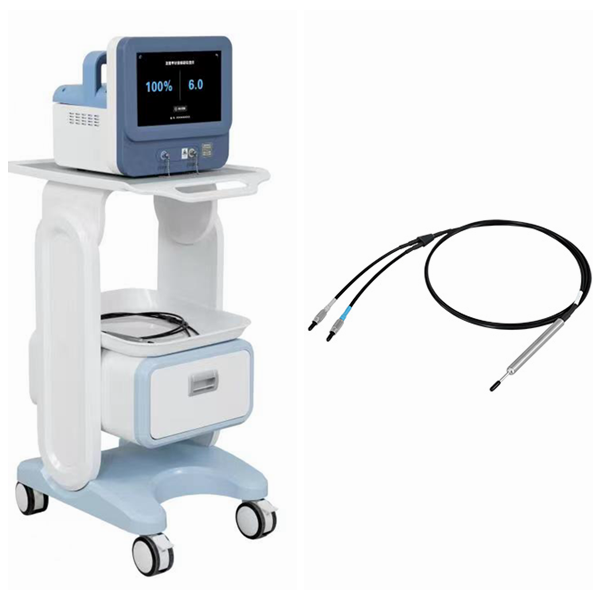
Researchers from Hefei Institutes of Physical Science, Chinese Academy of Sciences developed a fluorescence-based non-invasive detection device to allow for the quick and non-invasive identification of parathyroid glands during thyroid surgery.
This device, which was called Parathyroid Detection System (PTS), was designed by a collaborated team led by Prof. LIU Yong and Prof. Wang Yikun. Now it has been granted official medical device registration certification.
Thyroid nodules diagnosed by ultrasonography have become more common. Surgical intervention is the preferred treatment for thyroid cancer, but distinguishing parathyroid glands from surrounding tissues during surgery is challenging. This increases the risk of damaging the parathyroid glands, leading to post-operative symptoms and even mortality. Therefore, there is an urgent need for rapid identification of parathyroid glands during surgery.
"We have been looking for a unique near-infrared fluorescence-based approach for parathyroid detection," said ZHANG Yang, member of the team, "Parathyroid tissue exhibits high-specific expression of a specific protein, results in autofluorescence, so we took advantage of this autofluorescence for rapid and non-invasive intraoperative detection of parathyroid glands."
Years of difficult research and development have resulted in the effective implementation of three important technologies: weak fluorescence detection, ambient light adjustment, and automatic noise reduction, as well as the construction of an optical device structure that delivers excellent optical performance and accuracy.
The developed parathyroid detector is a non-invasive identification technology that can detect fluorescence signals in parathyroid tissue and surrounding tissues during surgery. Real-time analysis and feedback on result determination are provided based on the fluorescence signals.
Result of clinical research confirmed the important clinical value of this technology.
This clinical trial conducted from February to March 2023 in the general surgery and thyroid surgery departments of two hospitals, a total of 50 patients were enrolled based on the inclusion criteria. The combined statistical results from Clinical Center 1, Clinical Center 2, and the merged center showed that the PTS had sensitivities of 96%, 96%, and 96% for detecting parathyroid tissue in these three situations, respectively. The specificities for detecting non-parathyroid tissue were 100%, 100%, and 100% in the respective situations. These findings indicate that the PTS possesses high diagnostic accuracy. Furthermore, no adverse events were observed throughout the entire trial, demonstrating a high level of safety.
The PTS in this research is expected to enhance surgical efficiency and reduce surgical risks, offering assistance to surgeons, according to the team.

Parathyroid Detection System (Image by ZHANG Yang)